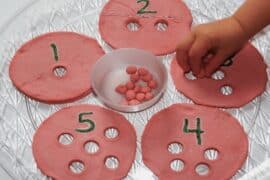The Journey of Scribbles to Sketches: Understanding Your Child’s Drawing Development
Hey there, awesome parents! Welcome to your go-to guide on nurturing your mini Picasso’s drawing development! From their very first crayon masterpiece to the intricate doodles that adorn your fridge, each mark is a milestone in your child’s growth. ? Let’s embark on this colorful journey together!
The Stages of Drawing Development
Understanding the stages of your child’s drawing development can be as thrilling as watching them take their first steps. With each stage, you’ll witness bursts of creativity, problem-solving, and fine motor skills that will leave you beaming with pride. Let’s shed some light on these developmental doodles!
? Stage One: Random Scribbling (15 months to 2½ years)
The adventure begins with random scribbling. At this stage, your toddler is getting a feel for those crayons and what it’s like to make marks on a surface. It’s all about the sensory experience and motor practice, so don’t worry about deciphering a masterpiece just yet.
Tips for parents: Encourage your little one by providing a variety of safe, non-toxic drawing materials and a free space to scribble. This not only nurtures their budding fine motor skills but also promotes their sense of creative exploration.
? Stage Two: Controlled Scribbling (2½ to 3½ years)
As they grow, you’ll notice more controlled scribbling. They might develop a favorite color (Hello, purple phase!) or experiment with shapes. This improved coordination is a signal that their cognitive and motor skills are evolving.
Tips for parents: It’s show-and-tell time! Have a chat about their creations and praise their efforts. Their art might not look like much yet, but your interest fuels their motivation and confidence to explore further.
?? Stage Three: Naming of Scribbling (3 to 4 years)
This stage is super exciting because you’ll enter the realm of naming scribbles. After they draw, they might tell you that those circles and lines are actually a “monster” or “mommy and daddy.” This represents a giant leap in their cognitive development as they begin to connect visual marks with concepts.
Tips for parents: Keep the conversation going! Discuss what they’ve drawn and ask open-ended questions to encourage their storytelling and language skills. And remember, at this stage, their stories might change with each telling – and that’s totally okay!
?? Stage Four: Pre-Schematic Stage (4 to 7 years)
Now we’re getting somewhere! The pre-schematic stage showcases recognizable subjects. Your child might draw their first “tadpole” people (big heads, no bodies, maybe some limbs) or a simple house. This marks a transformative period as they begin to make sense of the world around them through their art.
Tips for parents: This is a prime time to introduce more drawing tools and techniques. Let them experiment with different media such as watercolors, markers, or chalk. And throw in some art appreciation by visiting galleries or reading children’s books about famous artists.
Nurturing Creative Confidence
Beyond the stages, it’s crucial to nurture your child’s creative confidence. After all, drawing is a form of self-expression and communication. Be their biggest cheerleader, avoid criticism, and focus on the fun of the process rather than the end product.
Equip them with a creative environment and let them enjoy the magic of making art. Your walls might become more “decorated” than you’d like, but each smudge and line is a little piece of your child’s developmental journey. And remember, the best artwork often comes with a good story. So listen, cherish these early masterpieces, and watch as your child’s unique artistic style unfolds!
Stay tuned for more insights as we continue to explore how drawing affects various development aspects such as emotional growth, social skills, and even academic success. À bientôt, dear art-loving families!
Remember, every child develops at their own pace, so it’s less about the timeline and more about the milestones. Celebrate each stage, foster a love of art, and watch as your child’s confidence and abilities grow. Happy drawing, everyone!

5 Essential Things Parents Should Know in Preparing for Drawing Development
1. Drawing is a Multisensory Experience
Especially in the early stages, drawing is about more than just visual expression – it’s a sensory cocktail of touch, sight, and even kinesthetic learning. Providing a variety of materials like textured paper, finger paints, and chunky crayons can support this sensory learning.
2. Environment Shapes Creativity
Your home environment can be a blank canvas for your child’s creativity. Allocate a space where freedom of expression is encouraged. A corner with an easel or a wall with washable paint invites them to explore their artistic side without fear of making a mess.
3. Emotional Support Trumps Artistic Critique
Children are sensitive to feedback, so focus on positive reinforcement. Showing genuine interest in their work and process can be empowering. Instead of guiding their hand, guide their enthusiasm. Celebrate their artistic attempts and focus on the joy they get from creating.
4. Artistic Development is Linked to Other Developmental Milestones
Drawing isn’t isolated from other growth areas – it’s connected to motor skills, language development, and even social understanding. So, integrating storytelling with drawing, or encouraging group art projects, can have wider benefits for your child’s overall growth.
5. Flexibility Encourages Growth
Being flexible with your approach to your child’s art journey is crucial. They might go through phases of intense drawing interest followed by periods of disinterest. Offer opportunities and inspiration, but be willing to adapt to their natural rhythm and interests.
As you guide your child through the winding path from scribbles to sketches, remember that each child paints their own development at their own pace. With your encouragement, their drawing development can become an adventure both rewarding and vivid with creativity. Keep your canvas of parenting open, your paints of support ready, and enjoy this colorful experience together!
See more great Things to Do with Kids in New Zealand here. For more information see here
Disclaimer
The articles available via our website provide general information only and we strongly urge readers to exercise caution and conduct their own thorough research and fact-checking. The information presented should not be taken as absolute truth, and, to the maximum extent permitted by law, we will not be held liable for any inaccuracies or errors in the content. It is essential for individuals to independently verify and validate the information before making any decisions or taking any actions based on the articles.




